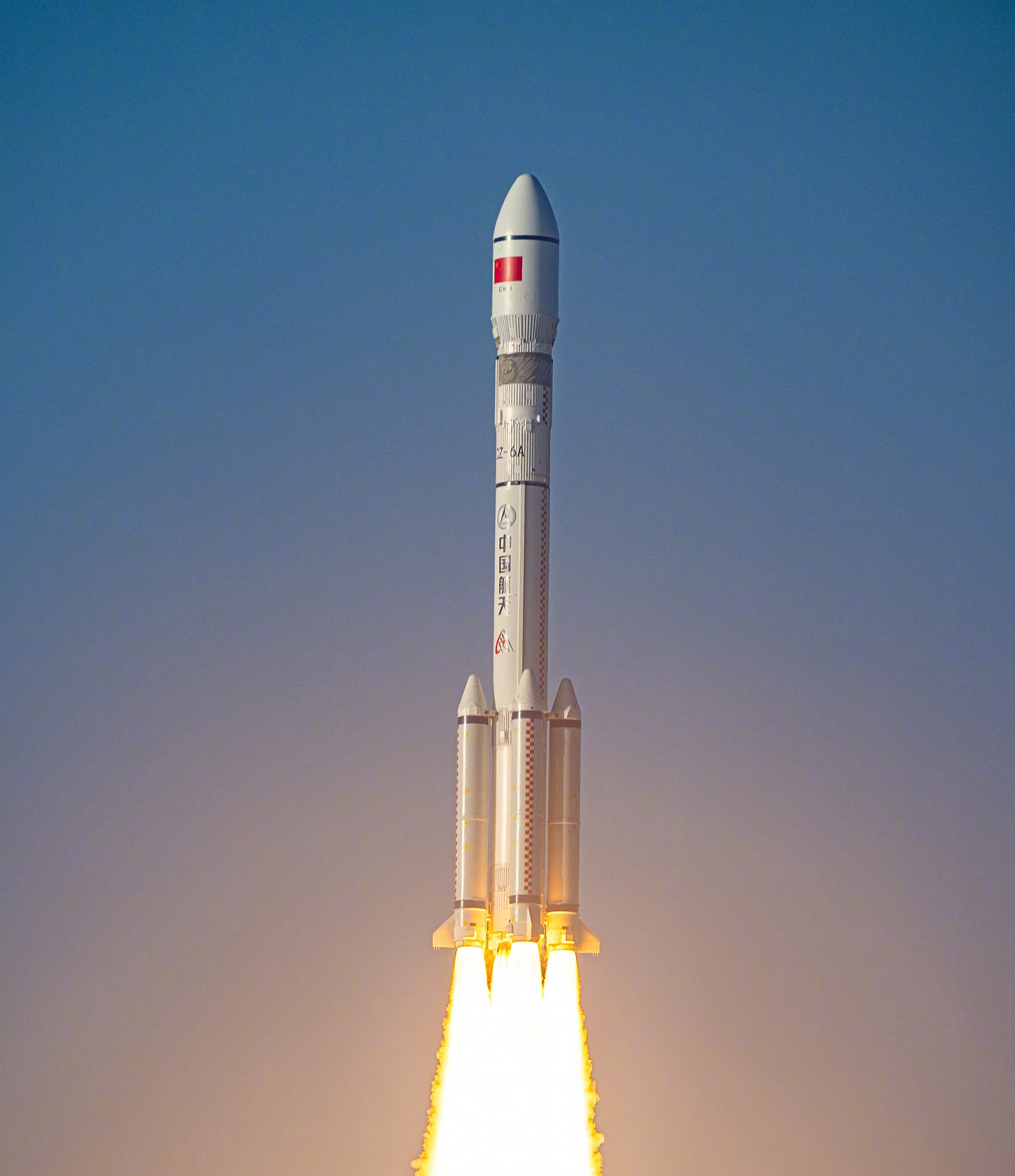Test Satellites Emerge From the Mist [Long March 6A Y11]
Six new space monitoring spacecraft were launched earlier today.
From Launch Complex 9A at the Taiyuan Satellite Launch Center, a Long March 6A blasted off at 06:51 am China Standard Time on April 19th (22:51 pm Universal Coordinated Time on April 18th). Out of a misty launch center, six satellites were carried to sun-synchronous orbit.
Atop of the Long March 6A were six Shiyan-27 satellties (试验二十七号卫星01星/02星/03星/04星/05星/06星), numbered 01 through 06. In order to carry the six spacecraft, a composite custom wall-mount payload cylinder was utilized for the first time on the Long March 6A, allowing for a less costly launch and smooth deployment once in orbit.
Shiyan (试验) is a satellite designation used for technology development spacecraft, and the name literally translates to test or experiment, Shijian (实践) is a similar designation for more mature technology tests. The six Shiyan-27 satellites will reportedly be used to test space environment monitoring (what the U.S. calls space domain awareness) technology and related technical tasks. This may include tracking other spacecraft and debris and sending the data back to Earth in a timely manner.
In its post-launch blog post, the China Aerospace Science and Technology Corporation stated that it expects the Long March 6A to begin high-density launch missions, likely as one of the primary state-owned launchers of the Qianfan (千帆) mega-constellation.
As part of those plans, the four boosters and first-stage have adopted a “generalized production mode”, while the second-stage can perform up to two burns, with different fairings and payload adapters that can be chosen upon mission needs. The Shanghai Academy of Spaceflight Technology added that, if needed, today’s Long March 6A vehicle could have been swapped to a different mission, without removing all but the fairing.
Today’s launch was the 11th mission for the Long March 6A, the 233rd Long March launch vehicle from the Shanghai Academy of Spaceflight Technology, and the 570th launch of the Long March launch vehicle series. This was also the 21st launch from China in 2025.
Liftoff video via Cosmic Penguin on Twitter, as well as 空天逐梦 and 中国航天科技集团 on Weibo.
Check out the previous Long March 6A launch
Qianfan Begins 2025 Deployments [Long March 6A Y6]
On January 23rd at 13:15 pm China Standard Time, or 05:15 am Universal Coordinated Time, a Long March 6A blasted off from Launch Complex 9A at the Taiyuan Satellite Launch Center carrying a batch of Qianfan satellites to polar orbit.
What is the Long March 6A?
This section is for those less familiar with China's Long March series of launch vehicles.
The Long March 6A is the first new-generation launch vehicle in China to utilize a combination of solid and liquid propellants. This vehicle was developed by the Shanghai Academy of Spaceflight Technology and utilizes a two-and-a-half-stage design, the boosters burn an unspecified solid propellant with the first and second stages burning rocket-grade kerosene and liquid oxygen.
The payload capacity of the launch vehicle is currently as follows:
8,000 kilograms to low Earth orbit
4,500 kilograms to a 700-kilometer sun-synchronous orbit
The first-stage is powered by two YF-100 engines, generating a combined thrust of approximately 244 tons using rocket-grade kerosene and liquid oxygen. The first-stage is augmented by four solid rocket boosters, each producing 124 tons of thrust from an unspecified solid propellant, resulting in a combined booster thrust of 492 tons. Together, the first-stage and boosters generate a total thrust of 736 tons. The second stage is powered by a single YF-115 engine, producing 18 tons of thrust using also burning rocket-grade kerosene and liquid oxygen.
On the launchpad, the Long March 6A is believed to be up to 52 meters tall, a handful of fairings are available, and weighs 530,000 kilograms when fully fuelled. The first and second stages of the vehicle have a diameter of 3.35 meters while the solid-fuelled boosters have a diameter of 2 meters, the fairing has a diameter of 4.2 meters.
So far every Long March 6A has launched from the Taiyuan Satellite Launch Center, in the north of Shanxi province.







![Qianfan Begins 2025 Deployments [Long March 6A Y6]](https://substackcdn.com/image/fetch/$s_!Bxs4!,w_1300,h_650,c_fill,f_auto,q_auto:good,fl_progressive:steep,g_auto/https%3A%2F%2Fsubstack-post-media.s3.amazonaws.com%2Fpublic%2Fimages%2Fb2741a20-3106-4ff2-b735-e703511e2fe2_4943x3210.jpeg)
